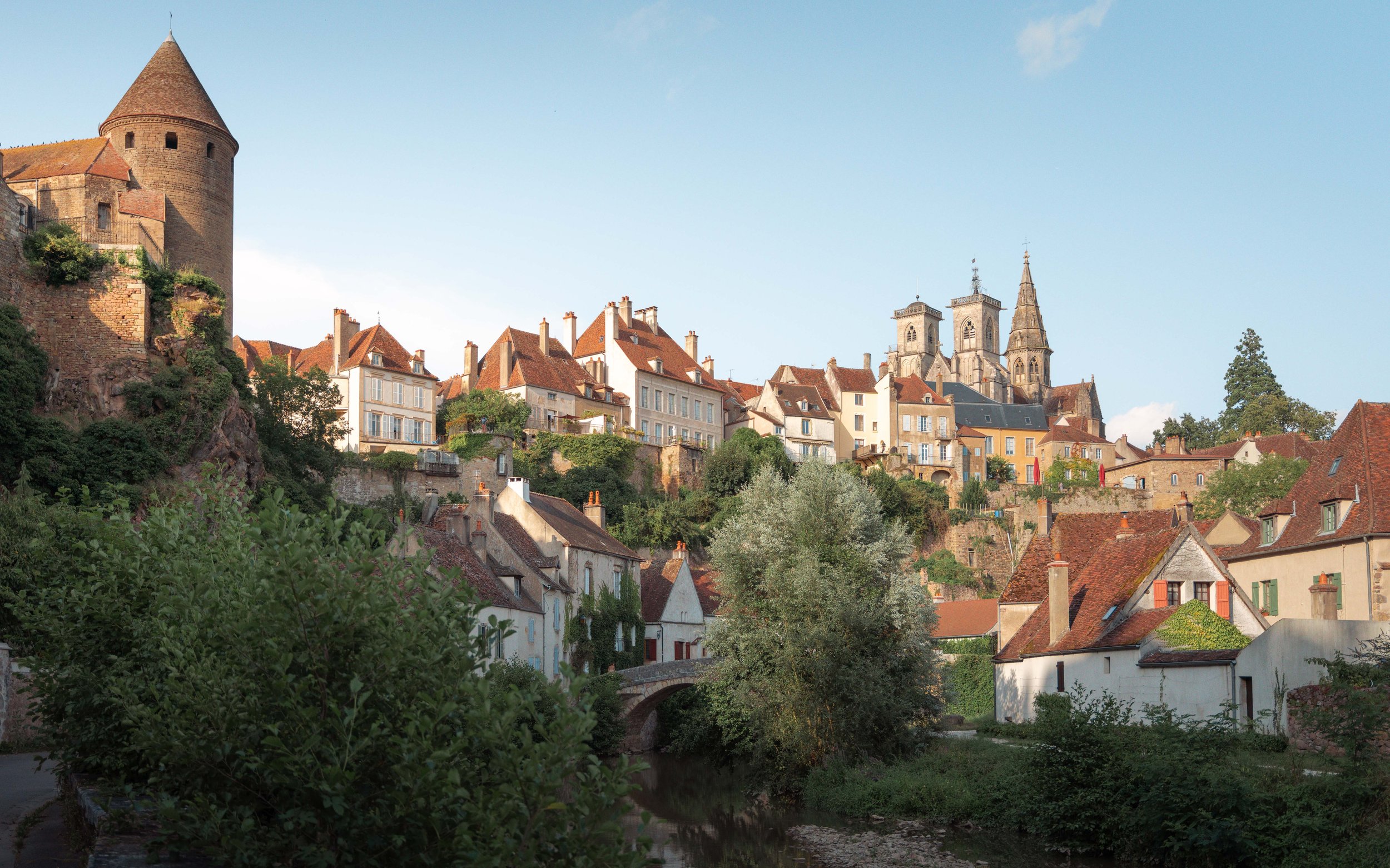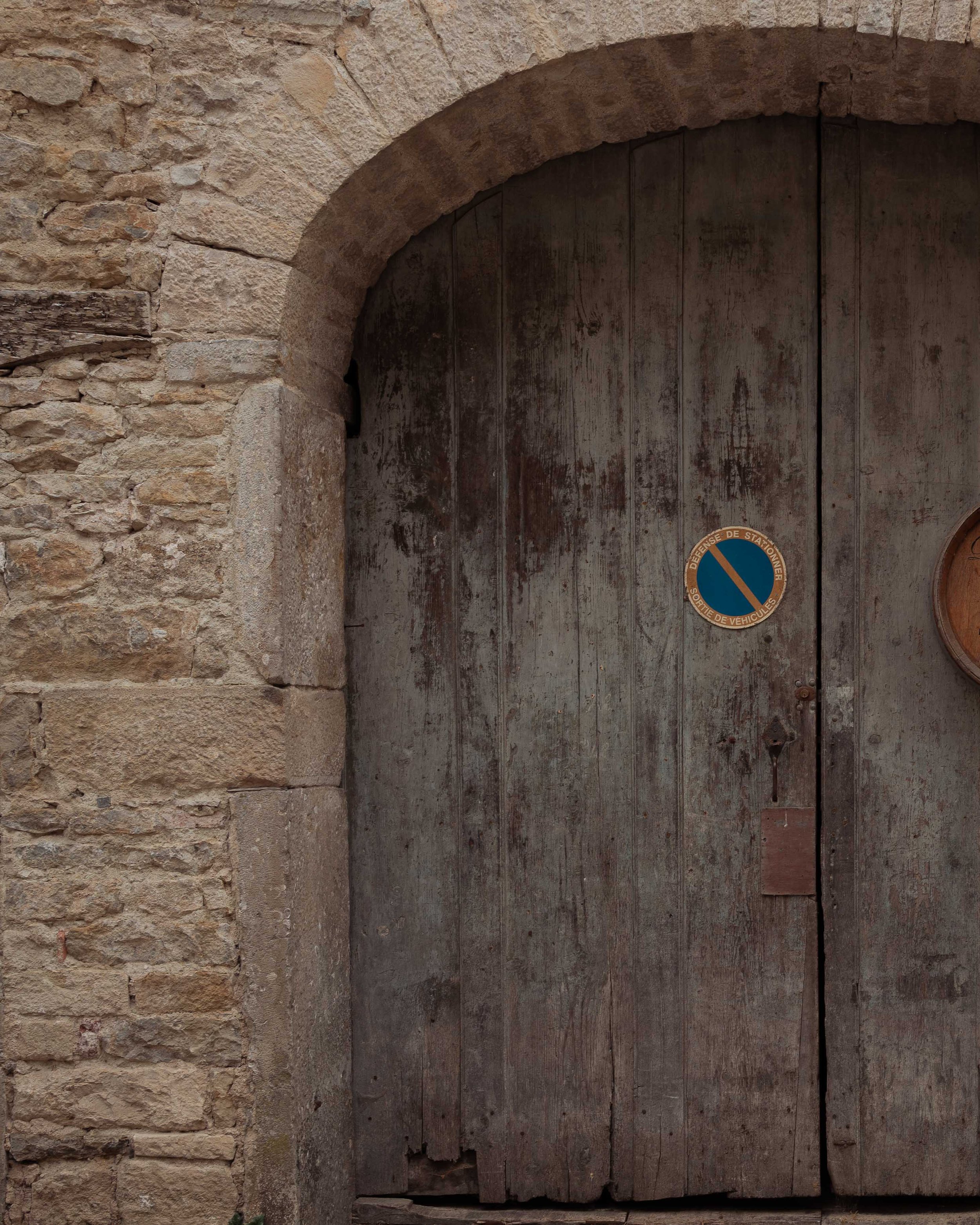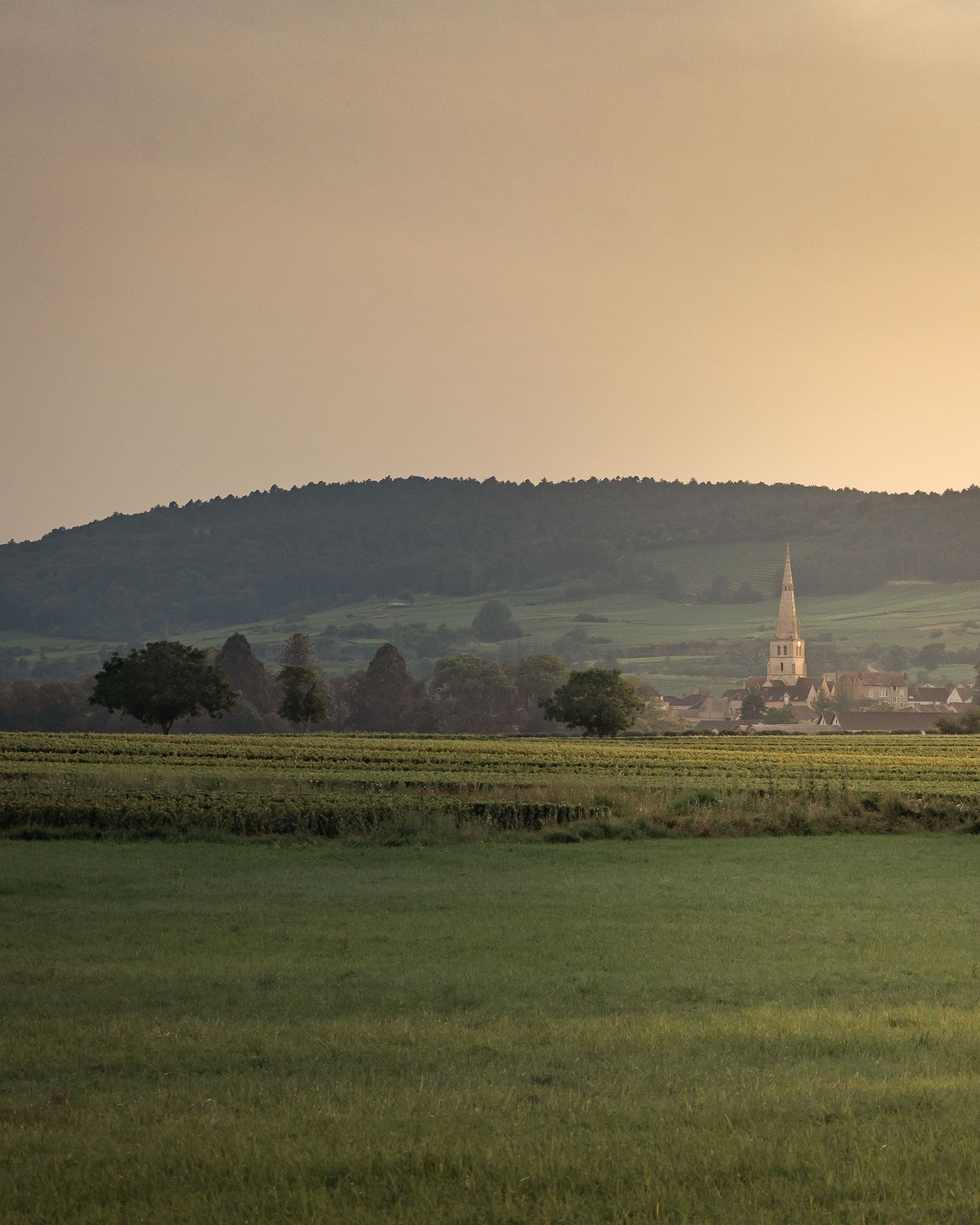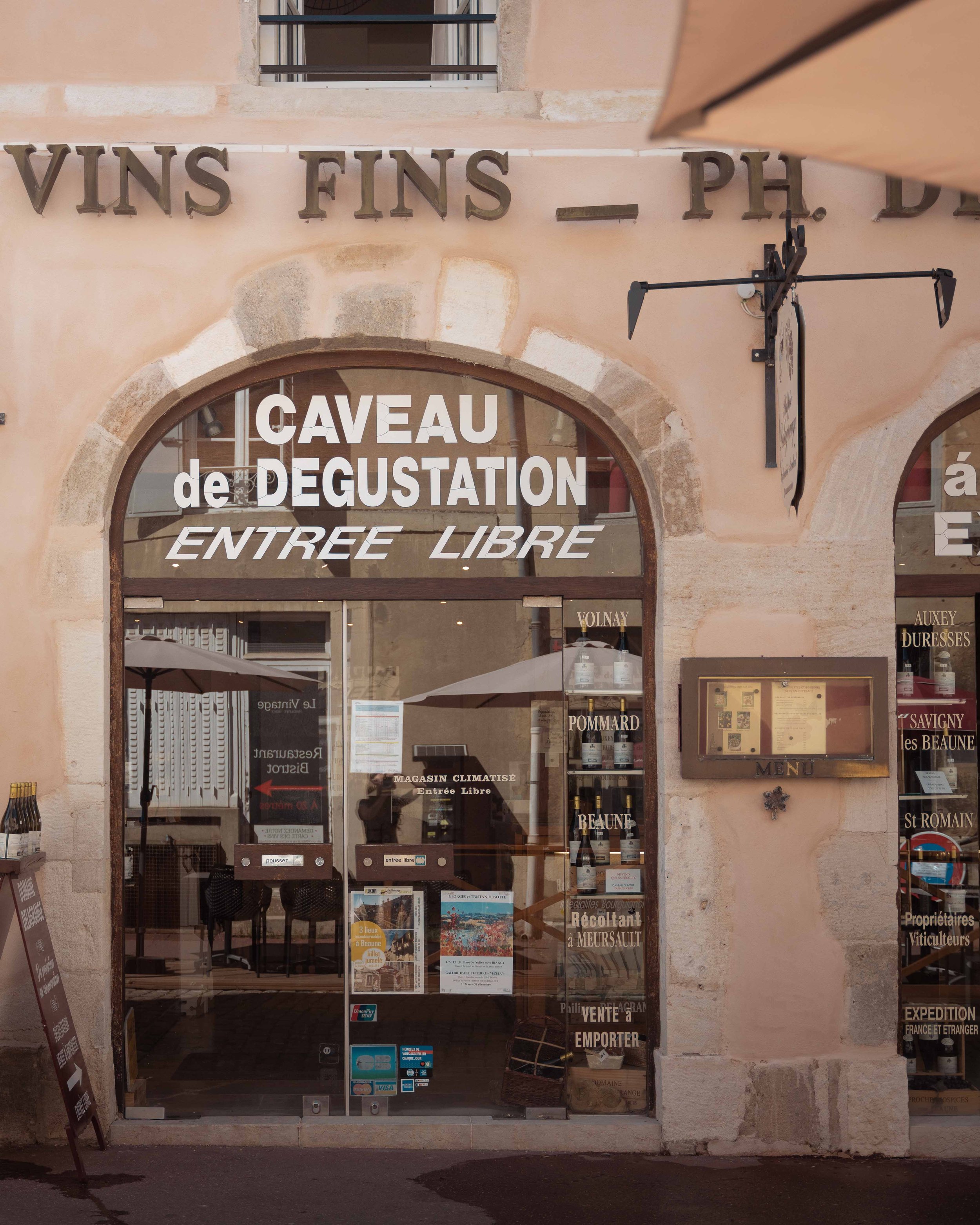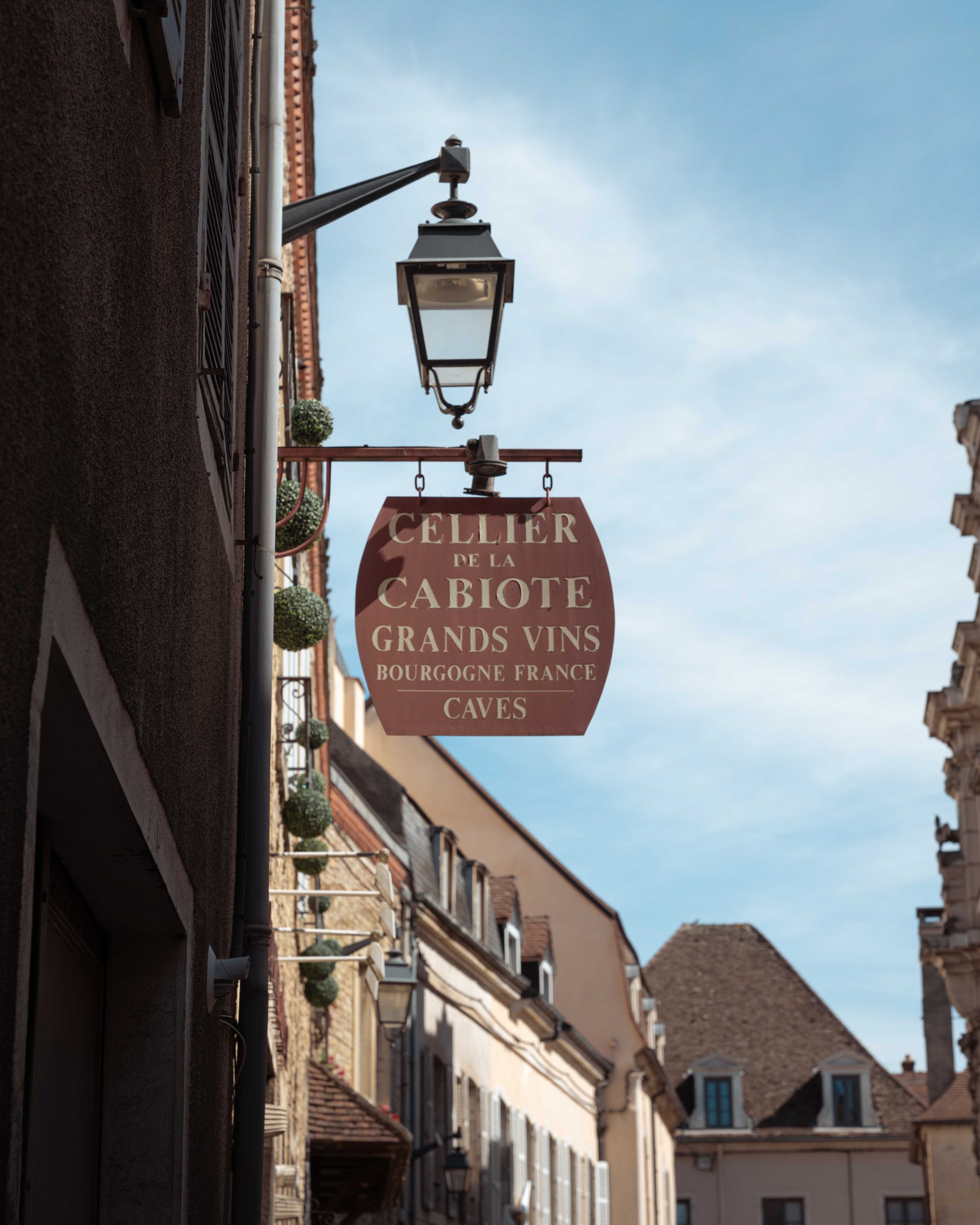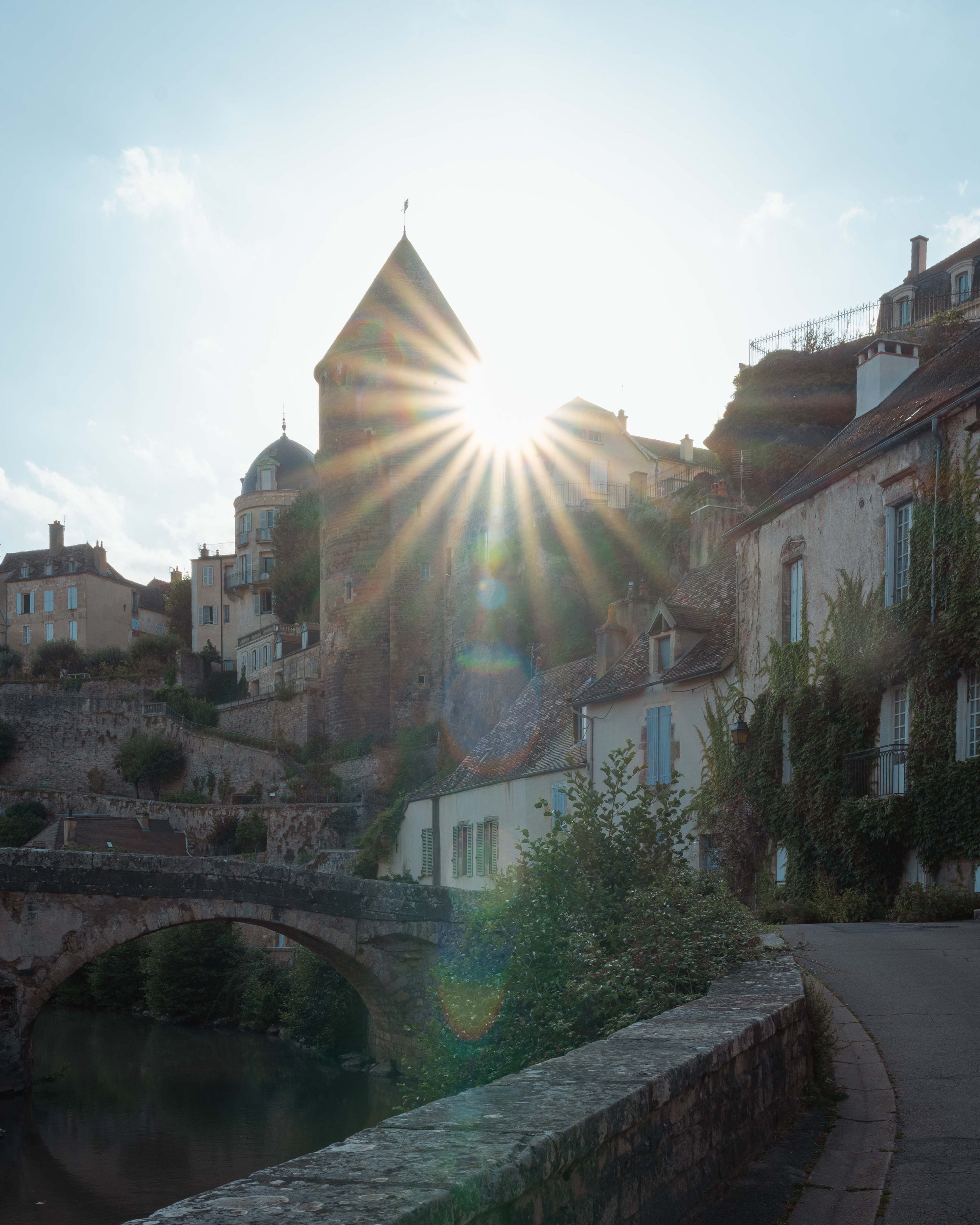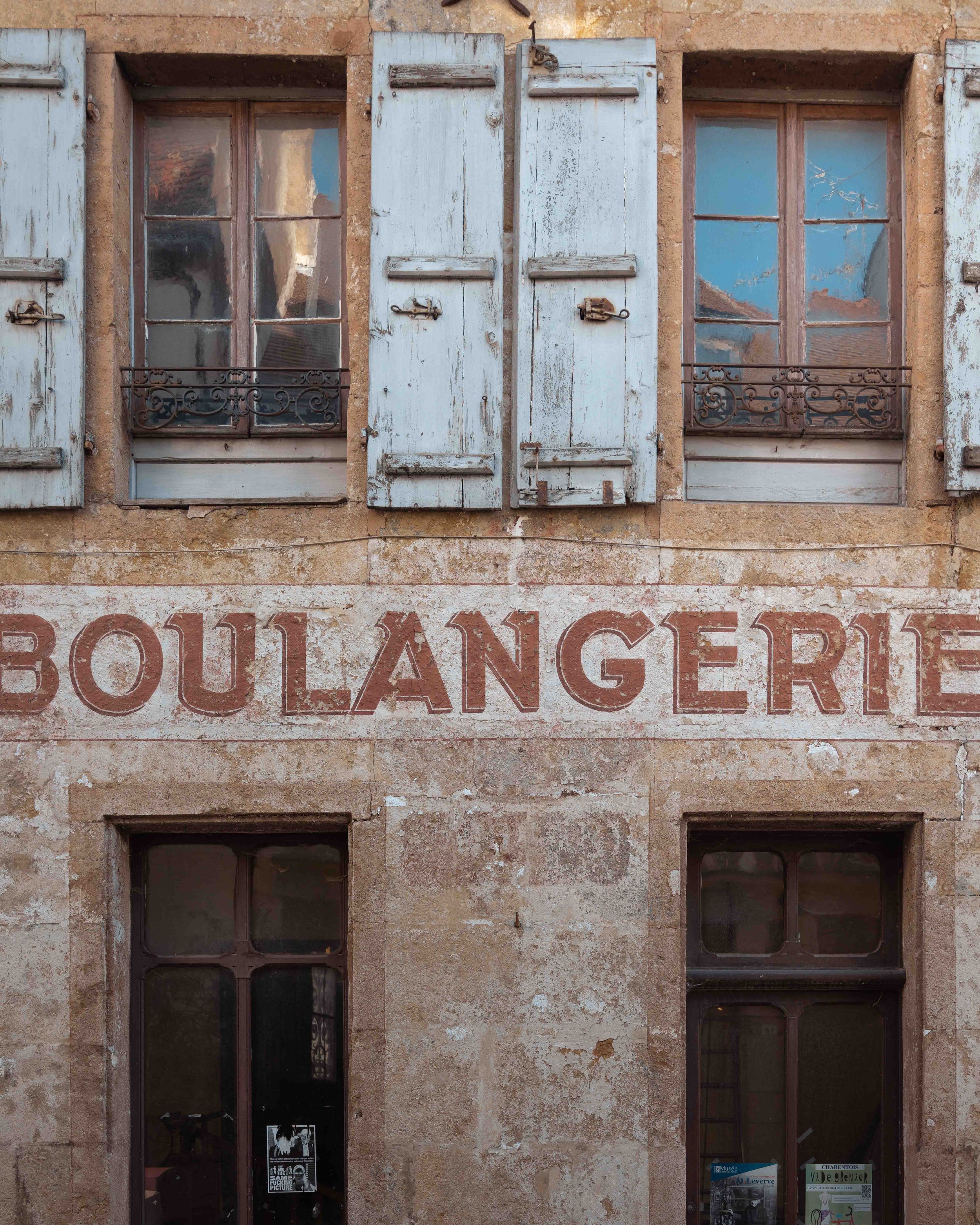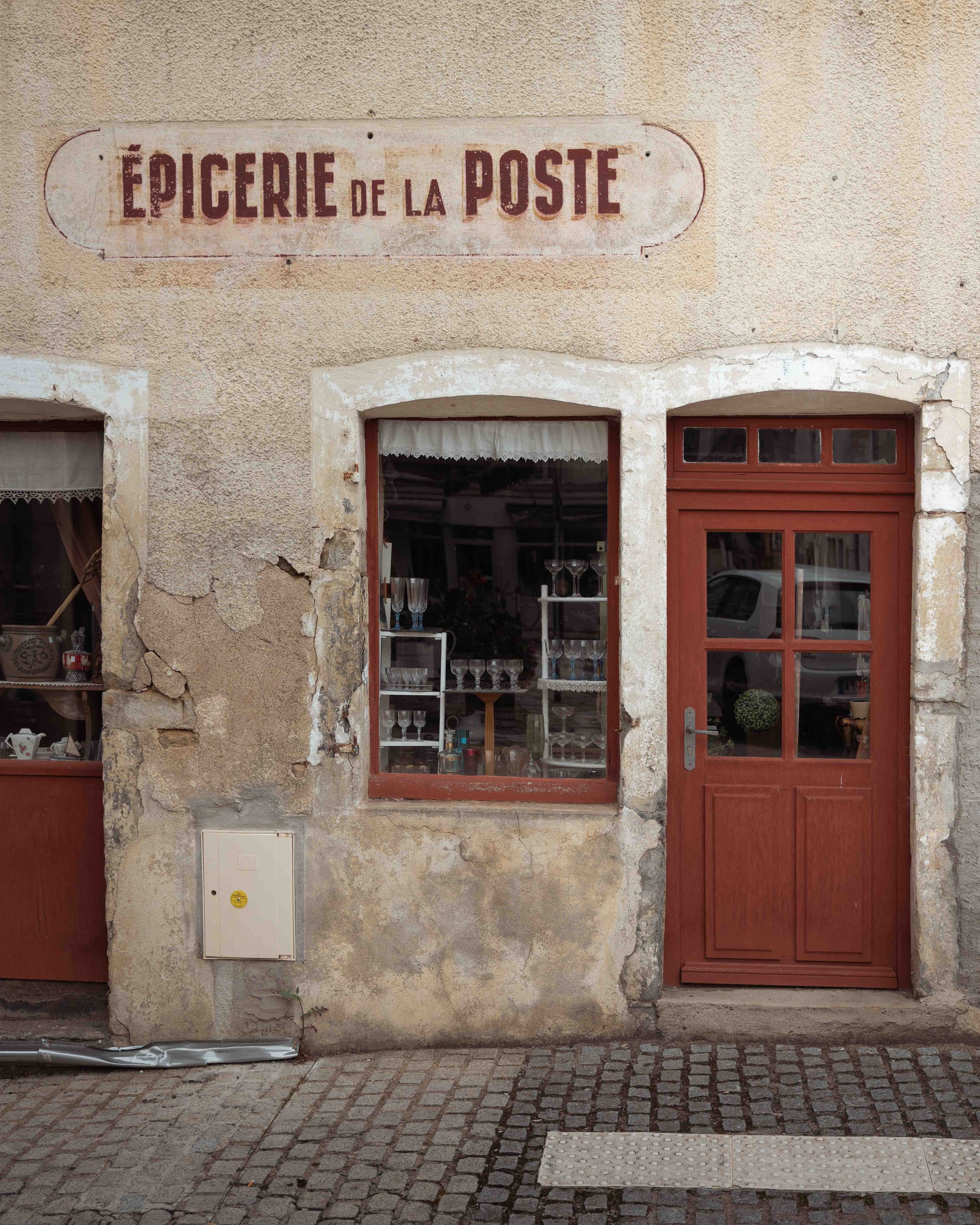Visiting Burgundy’s Côte d’Or? These are the villages you don’t want to miss
I don’t know what kind of witchery is at work there, but France seems to have concocted the ultimate formula for charming villages. It is a perfectly balanced mix of architecture, landscape, lifestyle, and atmosphere, and it works without fail even across regions of much different heritage and geography. Incroyable!
In this land where pretty towns seem to spontaneously sprout as if resulting from the sprinkling of fairy dust mere minutes before your arrival, Burgundy’s Côte d’Or is no exception. You may have been lured there by the prospect of some memorable oenological experiences, but I suspect that one of the enchanting towns will sweep you off your feet before you can take your first sip of wine.
Just imagine... delicate trellis covered in flowers, pastel wooden shutters, wrought-iron lanterns, conical roofs. Complete the scene with pleasant weather and world-class food and wine and, I mean, who can resist that?
From medieval hilltop villages clinging to rocky slopes to elegant towns where airy squares are livened by colourful carousels; from stamp-sized hamlets nestled among prestigious vineyards to fairytale-like burgs huddled around majestic castles, there is enough variety to please even the fussy among us.
As a rule of thumb, I don’t think that you can end up somewhere ugly. In fact, I daresay French people are incapable of creating ugly villages – or ugly anything really. But in my experience, the spots on the map on the left are just a little more rewarding for visitors.
You can zoom in and out using the + and - buttons in the bottom-left corner of the map or with your mouse wheel.
Clicking on any of the pins will open a side panel with the details of the location. You can also click on the rectangle button on the top-right corner to view the map in Google Maps as a separate tab of your browser or in the relevant app of your smartphone.
The best villages in Burgundy's Côte d'Or
Villages awarded 'Les plus beaux villages de France' designation
The two orange pins on the map identify the towns that made the cut for Les plus beaux villages de France (the most beautiful villages of France), a designation awarded to picturesque rural villages with at least two national heritage sites.
‣ Châteauneuf-en-Auxois
Châteauneuf-en-Auxois, a cluster of rustic stone buildings gathered around a grand medieval castle and surrounded by bucolic glory, certainly warrants a visit. Its grass-fringed alleys demand a leisurely pace to admire the textured facades of the houses, where vines drape over every surface and vibrant flower pots brighten window sills and balconies. Throughout, the pointed roofs of the majestic castle peek above the skyline, guiding wanderers through the medieval hamlet. Enchanting is the word.
Perched atop a rocky outcrop, the castle’s grandeur and commanding presence are best appreciated from afar. It is visible from the A6 motorway, the roads south of Châteauneuf, and also the nearby Canal de Bourgogne. Rather than encouraging you to catch a glimpse of the castle while on the high-speed A6, I have some recommendations on scenic approaches to the village, depending on the means of transportation you decide to use. An even more relaxed way to take in these views is from the path (accessible to pedestrians and cyclists) running along the Canal de Bourgogne. All the details are in the ‘How to get there’ section below.
~ THE LOWDOWN ~
WHAT NOT TO MISS
Architecture - Make your way to the Grand Rue, where the most elegant buildings in town flaunt stairwell turrets and highly decorated pediments above their doors.
Castle - The stunning medieval fortress that gives the village its name is open year-round except for Mondays and public holidays. It is well worth a visit for its tasteful interiors spanning centuries of interior design (€6 full price | €4.5 for young people and students | free for concessions and children under 12).
HOW TO GET THERE
Châteauneuf lacks a train station, and public buses don’t stop at the village, so getting there requires either a car or a bicycle.
By car - Beaune and Dijon offer good car rental options and are both around 40 minutes away by car. As usual, I recommend using Discover Cars to access the best deals and to check the all-important reviews of each available rental agency. I always find France quite tricky for car rentals, as prices are generally higher than in most European destinations and there are some dubious brands I am not familiar with. However, with Discover Cars having my back, I have always felt much safer in my choices.
If reaching Châteauneuf by car, I suggest the approach via the short road connecting the D18 with the D18A. It’s a narrow rural road to take slowly, but the views of the castle getting nearer and larger in front of you are worth it.
Also, you may want to take in the castle views from the Canal de Bourgogne. Park in La Rèpe and walk by the canal until you can cross it at one of the locks to reach the paved footpath on the opposite side.
While exploring Châteauneuf, you can leave your vehicle at the main car park (here), which is signposted as you drive through the village. There is a second car park here, and a parking area designated for RVs and campervans here. All parking areas are free.
By bicycle - Some of the best views of Châteauneuf’s castle are enjoyed from the bike paths running the length of the Canal de Bourgogne, so if you are based within a reasonable distance from the village, I would recommend cycling along the Canal at least until this viewpoint, and then and then heading for the village via the road that connects the D18 with the D18A. Be warned though: that’s a very steep road, that I wouldn’t be able to tackle without an electric bike.
Bicycles and e-bikes can be rented from most tourist towns in the Côte d’Or and Burgundy for, respectively, around €20 and €45 per day. Or, if you are a keen cyclist interested in a full holiday on two wheels, you can book a multi-day self-guided tour by the Canal de Bourgogne with highly rated Safrantours. On these tours all the practicalities (such as accommodation and several meals) are already planned, so you are free to focus on the gorgeous scenery while pedaling away along the predefined itinerary; you will be able to rent your two wheels from them too. These tours always include a stop in Châteauneuf.
‣ Flavigny-sur-Ozerain
Made of charming old stone buildings covered by crumbling stucco, surrounded by ramparts and fortified gates, livened by the tasteful colour accents of potted flowers and pastel shutters, Flavigny-sur-Ozerain is a delight to wander. I particularly loved the village's abundance of unexpected details—from ancient Gothic windows now bricked up, to gargoyles jutting from corners of secular buildings, to intricately carved column capitals nestled against stone walls.
The hamlet was born as a benedictine abbey in the Middle Ages and grew into a prosperous village after it received the relics of Saint Reine, thus becoming a significant pilgrimage site.
These days, one of Flavigny’s international claims to fame is to have acted as the fictional village of Lansquenet in the movie Chocolat (starring Johnny Depp and Juliette Binoche), which is only fitting given its chocolate box looks. However, it is another type of treat that gets all the spotlight here: aniseed candy. The renowned Flavigny aniseed recipe was perfected by the abbey’s monks, perpetuated by the residents after the French revolutions, and finally re-established as a commercial product in 1923 by the Troubat family – the same family in charge of production today in the very same abbey where the recipe was conjured up.
~ THE LOWDOWN ~
WHAT NOT TO MISS
Film locations - If you enjoy comparing reality to cinema fiction, head to the two main locations used in the movie Chocolat: the main village church of Saint-Genest and the building that played the iconic chocolate workshop (this is the precise location).
Aniseed - Unique to the village is the production of the Anis de Flavigny from the very former abbey where the recipe was originally conceived hundreds of years ago. You can visit the factory and abbey on a free guided tour (every 40 minutes), expand your knowledge at the free dedicated museum, and stock up at the impossibly cute confectionery shop.
HOW TO GET THERE
Since Flavigny doesn’t have a train station and isn’t served by public buses, it can only be reached by car or bicycle.
By car - There are plenty of car rental options in Dijon and Beaune, respectively one hour away and around one hour and fifteen minutes away.
Driving through the old village centre is forbidden; and frankly, even if it was allowed, I wouldn’t dream of taking a car through those steep, narrow alleyways. Luckily, there is a handy free car park here, just a few minutes walk from the old abbey and the aniseed factory.
Visiting Flavigny on the same day as Châteauneuf-en-Auxois is an option, as the two towns are only about 45 minutes apart. They are both typically included in guided tours of Burgundy's best villages alongside Semur-en-Auxois (see below).
The full-day tour at this link, for example, leaves from Dijon and stops in all three charming spots; and, since it's Burgundy, it also involves a wine tasting in the pretty hamlet of Aloxe-Corton.
By bike - If you are cycling along the Canal de Bourgogne, you can reach Flavigny via a detour from Pouillenay. According to Google Maps, this uphill detour takes about 30 minutes one way, but the downhill return trip is much quicker.
The multi-day self-guided bicycle journeys offered by Safrantours include at least one overnight stay in Flavigny.
Wine villages
No exploration of the scenic vineyards of the Côte d’Or is complete without visiting its wine towns. Whether you’re stopping for lunch, indulging in a wine tasting, or simply soaking in the rural charm that pervades them, these villages offer something special. They also provide the undisputed ideal base for a rewarding immersion in the region’s winemaking heritage.
Drawing on the UNESCO-recognised status of the area, these cream-stone villages, even when consisting of just a handful of roads, are all tastefully groomed and proudly looked after. Think clean streets, atmospheric night lighting, potted plants and flowers gracing pedestrian alleys. You will spot grand mansions behind sculptural gates and gorgeous Burgundian roofs of glazed colourful tiles arranged in geometric patterns. And never for a second will you be allowed to forget the vital link that that these towns hold with their surrounding vineyards and the world-class wines they produce: tasting opportunities are ubiquitous, as are fine wine merchant shops.
Being based in the heart of this area, I had the privilege to spend a little time in almost all the wine towns, and below are those I found the most captivating, listed in my personal order of preference – top to bottom.
‣ Beaune
Ok, I must admit that with its population of 20,000, Beaune is closer to a larger town than to a village. But I didn’t have the heart to leave it out of this list.
Within its walled core, the rhythm of life mirrors that of other hamlets in the wine region, with cobbled, pedestrian-friendly lanes, and countless picturesque corners to discover. Moreover, during the three weeks I called this town home, I was completely captivated by its joyous atmosphere, brought to life by its deep-rooted oenological heritage and the abundance of wine-related activities. It’s as if the air itself was a little inebriated.
There’s plenty to keep you busy here - a wide range of wine tastings to educate you, stunning architectural landmarks to awe you, museums and art galleries to inspire you, and a superb restaurant scene to delight you. You can stretch your legs strolling on the walking path atop the mighty medieval walls, aimlessly wandering the curving alleyways while admiring the graceful Renaissance architecture, or joining a walking tour to ensure you don’t miss any of the gems nestled in this jewel of a city. Really, Beaune is textbook French charm.
‣ Nuits-Saint-Georges
(The best north of Beaune, in the Côte de Nuits)
The first time we drove through Nuits-Saint-Georges during an exploratory trip to the surrounding area, we instantly understood that this attractive village deserved a dedicated stop. So, we returned a few days later with more time at hand; it proved a good idea.
The village core is a pedestrian-friendly web of narrow alleys, has an appealing array of shops and restaurants, and calls for relaxed strolls only to be interrupted to stop and savour the area’s celebrity Pinot Noirs. I highly recommend taking part in a tasting: it will open for you the doors to some prestigious wine mansions (see ‘What not to miss’ below for some recommendations), and could easily provide a highlight of your time in the Côte d’Or.
‣ Meursault
(The best south of Beaune, in the Côte de Beaune)
Meursault is as smooth as its buttery Chardonnays. Radiating in gentle bends from the town hall - a slender feudal castle topped by a strikingly tiled roof - the village streets widen in places to make room for manicured patches of green grass and flowerbeds. Everywhere you look, the scene is made of charming limestone buildings with projecting lanterns and wooden shutters. And if you raise your eyes towards the not-so-distant views, you will see a background of sloping vineyards with some celebrated Grand Crus in the making.
A network of trails of various lengths and difficulties criss-crosses the lovely hills just outside of Meursault and takes you into the middle of some glorious countryside. You can find plenty of trail choices on AllTrails. I did the easy Duresses Loop and, even though some sections were a little unremarkable, I loved seeing the village paths turn into country lanes flanked by tall stone walls, and later open and reveal the vineyards’ expanse.
‣ Volnay
(Côte de Beaune)
Significantly sleepier than the previous villages on the list, Volnay’s pace is undoubtedly relaxed, and its tourist appeal may seem a little smaller. However, its quiet nature also results in a more authentic and less tourist-focused feel. My favourite spot is the car park in front of the town hall: from here Volnay's hillside position offers delightful views over the surrounding vineyards. Sit on one of the green benches and savour a tasty baguette-based snack before continuing on to the next stop.
Or hit the Voie des Vignes or the Route des Grands Crus towards Pommard (more on this in the ‘How to get there’ section below), another venerable spot for oenophiles. The two villages are only 25 minutes apart by foot and a mere 7 minutes by bike.
If you seek a truly special treat, consider rising into the sky on a hot air balloon from the car park next to the Château de Pommard. Needless to say, this experience delivers the ultimate views over the vineyards and could easily become the highlight of a visit to the wine region. Although I didn't embark on this adventure (it didn't quite fit my budget), I must admit I felt quite jealous of the excited group that arrived at the car park at sunset to board their balloons.
Next time.
‣ Gevrey-Chambertin
(Côte de Nuits)
Claiming to be where the first Burgundian vines were planted and counting no less than nine Grand Crus to its name, it’s fair to say that this town holds a very established role in the region’s wine mythology. The village is yet another vineyard-surrounded delightful maze of stone buildings decorated with flowery displays. Make sure you walk down picturesque Rue des Halles: it features a surprisingly uniform row of stone houses on both sides and a feast of colourful hanging flower pots.
~ THE LOWDOWN ~
WHAT NOT TO MISS
Beaune heritage - The Hospices de Beaune (or Hôtel-Dieu de Beaune) is a former hospital for the poor, and probably the most beautiful hospital you’ll ever see. It blends the signature Gothic elements of pointed roofs, turrets and spires, with Burgundy’s iconic multicoloured tile roofs. You’ll kick yourself if you forget your camera. Inside, I enjoyed lingering in the barrel-vaulted Grande Salle, a vast room lined with beds where nuns once cared for the sick, and I was fascinated by the old pharmacy, filled with stoneware pots that once held a variety of ointments and potions.
Beaune is full of beautiful medieval and Renaissance architecture, not all as obvious as the Hospices. The best way to appreciate the town and ensure no hidden spot remains hidden, is by signing up for a self-guided tour or hiring a local guide to take you on a private walking tour.
Wine tasting - Wine tasting in the villages is an experience you won’t forget. Whether you’re a seasoned wine connoisseur or a complete beginner like me, there will be tastings that suit your taste buds and budget. Burgundian wine is one of the world’s finest, and the best bottles are hard to come by outside of French or fine-dining restaurants with curated wine lists (and proportionate price tags). Therefore, I highly recommend you don’t miss this occasion to try a few prestigious wines while a sommelier tells you all about them and guides you through a journey of discovery and appreciation. Last but not least, some tastings take place in incredible settings such as castles or ancient cellars that you wouldn’t have otherwise had access to; that alone can make the experience truly memorable.
In Beaune:
Oenothèque Maison Drouhin. This tasting would be my top recommendation were it not for the slightly high price. Maison Drouhin is a prestigious wine house and boasts several Grand Crus under its label. All tastings are preceded by a tour of Beaune’s oldest underground cellars, and feature a minimum of six wines (three whites and three reds), at least half of which are Premier Crus (the second-highest wine denomination after Grand Cru). The starting price of €65 per person for a 1.5-hour “Balade” tasting inclusive of cellar tour may not be such a steep tag after all. All tastings are by appointment only, and can be booked either by calling +33 (0)3 80 24 68 88 or emailing visite@drouhin.com.
Maison Champy. Founded in 1720, Maison Champy, another revered institution in the Burgundian wine world, holds the title of the oldest winemaking house in Beaune - and they make a point of stating it clearly. A highly rated tasting of five wines takes place in their 15th-century cellars and costs either €25 or €55, depending on whether it includes a Premier Cru or a Grand Cru. If you are happy to give the cellars a miss, tastings are also offered in their boutique on Beaune’s Market Square, and start at €16.
Patriarche Père et Fils. Patriarche offers a sensational experience regardless of your level of wine knowledge. If you are less about the wine and more about the surroundings, then I heartily recommend the Individual Visit and Wine Tasting. Unlike in other tours, you are left to your own devices exploring the atmospheric cellars – which happen to be Beaune’s largest; this alone for me was enough to justify the €25 tour price. However, you also get to try six excellent wines (three whites and three reds) including two Premier Crus that will delight your taste buds. If you want a more intimate experience, the Privilege Tour consists of seven wines sipped under the guidance of a private sommelier, and it even ends with a gift bottle! For groups of up to five people the cost is a flat €325 for the whole group; the individual rate decreases slightly as the numbers of participants rises. Both tours can be booked here.
In Nuits-Saint-Georges:
Dufouleur Frères. This highly-rated tasting grants you access to the beautiful Dufouleur estate (their elegant chateau is a sight to behold) and includes the sipping of six wines (but it’s not uncommon to be presented with more) under the passionate guidance of a member of the wine-making Dufouleur family. Lasting for 2 hours and costing €45 per person, this is quite a good package for wine enthusiasts of all experience levels.
In Meursault:
Château de Meursault. This is the most popular tasting in town, thanks also to the stunning context provided by the chateau. There’s something for everyone, from €29 walk-in tastings on the outdoor terrace or in a cosy indoor sitting room, to more structured €59 tastings featuring seven wines and a cellar tour. For those looking for something extra special, there are exclusive €150 tours in more intimate settings.
A note. In 2024, restoration work began on the cellars, meaning tastings that once included a full cellar tour now only offer a brief glimpse of the accessible underground section. To make up for it, they’re apparently providing higher-quality wines at the tastings. However, if the limited cellar access is a deal-breaker for you, I recommend you check the château’s website to see if the renovation notice is still up.
In Volnay:
Domaine Cluzeaud Jean-Claude Et Fils. This is the highest-rated tasting in Volnay thanks to both the friendliness of the winemakers and the quality of their wines. Tastings take place without the need of a reservation and the price depends on the wines sampled.
Château de Pommard. A legendary producer of some of Burgundy’s priciest bottles, Château de Pommard is a must-visit for anyone even slightly curious about the region’s wines. And hey, if you’re doing it just for the bragging rights, no judgement here. It was during a Discover Burgundy tasting at the Château that I had my first sip of Burgundian wine and, while other tastings would later acquaint me with higher quality wines (no crus were sampled here), I still found it to be a brilliant introduction to traditional winemaking and the factors that shape the final product. I left with a deeper regard for the work and passion behind winemaking. The Discover Burgundy tasting costs €20 per person but I’d suggest requesting a more varied tasting of at least six wines. The tastings take place in a rather simple room of the castle with pleasant vineyards views; since the estate is undergoing an extensive upgrade, the cellars are currently closed to the public.
In Gevrey-Chambertin:
Philippe Leclerc. A popular walk-in tasting offering good value and a bit of an amusement park feel is the one offered for only €10 (waived if buying any bottle) in the cellars at Philippe Leclerc’s. The cellars themselves put on quite the show with their period furniture and old wine-making tools. Not as atmospheric as the dark and humid cellars I relished exploring in Beaune, they are nevertheless something different to experience in the tiny village of Gevrey-Chambertin.
HOW TO GET THERE
By car - The Route des Grands Crus is a scenic road winding its way through picturesque, UNESCO-protected vineyards, and linking all the wine villages like a daisy chain. If you are keen on driving it, you can use this map to follow it.
Stretching for 60 kilometres from Dijon in the north (although the landscape becomes interesting a little later, around Gevrey-Chambertin) to the wine village of Santenay in the south, this is not a road trip to be rushed. Get in your rental car (the best options are in Dijon and Beaune), lower your windows to savour the fragrant country air, stock up on bottles at the wineries that pop up along the way, and bring a picnic basket with some baguettes, cheese, and fresh tomatoes to keep your belly full, or refuel at local bakeries or at one of the many gourmet restaurants.
And what if you wish to sample some wine along the way? Surely, in such a prime wine country, not indulging a little sounds like an unreasonable deprivation. The good news is that a few wine tours do the driving for you and combine stops at villages, tastings, and compelling chats while on the Route. Some popular options are:
Full-day Route des Grands Crus tasting tour from Beaune. Immerse yourself in the landscape of Burgundian winemaking and its products with this tour celebrating the wines from the Côte de Nuits north of Beaune. Stop at some of the most prestigious (and scenic) vineyards and enjoy sampling no less than 14 wines assisted by a knowledgeable guide. The price doesn’t include lunch.
Full-day Route des Grands Crus tasting tour from Dijon. If you are based in Dijon (or can conveniently reach the city), this is the perfect option to spend a day among the vineyards on both sides of Beaune. It is run for small groups of up to 8 people and includes two tastings of at least 5 wines and a 2-hour lunch stop and exploration of Beaune. The price doesn’t include lunch.
Full-day private tour in a classic car from Beaune. If you are after something a little more original, this private tour may just be up your street. It involves zipping around the most renowned vineyards south of Beaune in a classic Citroën 2CV and includes two private tastings in the delightful villages along the way. There is a half-day version (morning or afternoon – you decide) with a 5-wine tasting if you are time-conscious.
By bike - The Voie des Vignes (the vineyards’ path), an 81km-long cycle path unfolding through dozens of wine estates between Dijon and Nolay, provides a more nature-immersive option to experience the Côte d’Or vineyards and their villages. We rented bicycles in Beaune and pedalled along different sections of the Voie on different days. I would recommend renting an e-bike rather than a common bicycle: the path is not flat and a few times I had to dismount and push my bike uphill while watching others breezing past me on their technological two-wheels without a drop of sweat.
Bourgogne Velo Evasion, the company we rented our bikes from, runs a popular, highly rated wine tour from Beaune. Priced at €210 per person, it includes the bike rental, a full day of vineyard explorations, two tastings, lunch, and the assistance of a passionate guide. I'd say this is pretty good value. And judging by the reviews, everyone has a jolly good time - except those who don’t upgrade to an e-bike!
On a sidecar - A memorable way to explore and appreciate the vineyards around Meursault and beyond is on a private tour on a sidecar. Here, comfortably nestled next to a motorcycle, you can ask the knowledgeable driver all questions you may have while scooting down narrow lanes and breathing in the scent of the vines.
By public transport - I can’t sugarcoat this: travelling by public transport between the wine villages requires careful advance planning and a zen attitude. If you’re up for it, Mobigo should be your go-to resource. This handy website lays out all the options for getting between towns, whether by train or local bus, complete with timetables.
As a rule of thumb, towns north of Beaune such as Gevrey-Chambertin and Nuits-Saint-George are better served by public transport and can be reached via bus 113, running between Dijon and Beaune and stopping in most wine villages along the way. Getting to Nolay and Meursault is trickier and involves a change in Beaune for bus 20.4, which runs on a very loose schedule and not on Saturdays.
Beaune is the only town where taking the train is worth considering at all. Located on the Dijon – Lyon axis, it has fairly frequent trains to and from both cities. If you are coming from anywhere else, you will need to change trains at either of those two stations to get to Beaune.
Other villages I enjoyed visiting
‣ Semur-en-Auxois
Huddled within a sharp bend of the river Armançon and hanging onto a rocky cliff, Semur-en-Auxois owes its existence precisely to that: an easy-to-defend position. In the Middle Ages, especially during the Hundred Years War, fortifications increased, turning the village into a proper walled city with an imposing fortress.
I had a great introduction to this village walking under the metres-thick vaulted Porte Guillier, the old city gate. I felt comforted and safe as I headed towards the medieval town centre and, once on the other side, I was welcomed by the cheerful sight of colourful bunting flags waving in the breeze. The architecture here hasn’t changed for centuries, and elegant Renaissance buildings and stunning half-timbered houses line squares and alleys. Bakeries, tea houses, and a concentration of antique stores contribute to the charm of this pretty enclave.
~ THE LOWDOWN ~
WHAT NOT TO MISS
Great views - As picturesque as Semur is, there are a few locations from where its striking position and architecture look particularly compelling. I have a few tips on where to find them.
Don’t leave Semur before venturing down Rue du Fourneau and the footpath to the river. Follow the downhill steps leading out of the fortifications and towards the small Pinard Bridge. This is one of the most photogenic spots in town, with the old houses lining the river banks, the graceful bridge adding a romantic touch, and the village perched on the rocky cliff dominating the skyline.
Walk under the ancient city gate of Porte Guillier to enter the medieval core of the village, and stroll along Rue Buffon, where you can find the most beautiful old buildings in town. Take a peek inside Gothic Collégiale Notre-Dame and take in its stained-glass windows and tall ceilinged naves; you may be as lucky as we were and stumble upon an atmospheric organ rehearsing session.
Feel small next to the imposing Tour de l'Orle d'Or, one of the four towers originally protecting the corners of the medieval fortress, and walk down rue des Vaux until Pont des Minimes. Maybe not as striking as the views from Pont Pinard, this more rural setting is nonetheless very pretty.
HOW TO GET THERE
Without a train station and direct bus connections to the main tourist cities, your best options to reach Semur are driving or joining a tour.
By car - If you drive to Semur, I recommend the approach via the Pont Joly, a tall canyon-spanning cobbled bridge, to get an instant taste of the fortified nature of the place: the sturdy walls and mammoth round towers will be in plain sight as you drive towards the town centre.
The village is a one-hour drive away from both Dijon and Beaune so, if you are basing yourself in or near either of these two cities, I would suggest pairing its visit with Flavigny-sur-Ozerain (see previous villages), which is only twenty minutes away.
There are a few free car parks where you can leave your vehicle. Parking du Renaudot is the closest to the village core, but it’s quite small. We parked in Parking Espace Liberté and found it very convenient. Alternatively, Parking Collenot is the largest of the three.
By bike - I couldn’t identify any bicycle trails in the area, so if you are visiting on two wheels, you may want to cycle along the Canal de Bourgogne until Pouillenay or Marigny-le-Cahouët, and then follow the road until Semur.
By tour - If you don't feel like driving and are interested in also visiting Flavigny, Châteauneuf, and the vineyard region, this full-day tour from Dijon will allow you to kill four birds with one stone. It includes a wine tasting in renowned Aloxe-Corton.
‣ Nolay
From the D973 that runs through it, Nolay looks like a pleasant but nondescript French town, much like many others along the road. But park your vehicle and walk to the village’s medieval heart and you will find a more compelling story.
Nolay doesn’t seem to make the selection of most travel advice, but that only makes me a little prouder for having stopped there. Arriving by car from Beaune, I saw in the distance a Gothic spire rising dramatically from the middle of the village, and while the main road bent to bypass the old town centre, I decided to stop and walk towards the spire instead. I ended up in a square bordered by old half-timbered houses, a gorgeous stone church (from whose roof rose the spire I saw from the road), charming restaurants with outdoor seating, antique shops, and an impressive open market hall held by ancient wooden beams. Around the square, I found wood-fronted artisan workshops, deli stores, and patisseries straight out of a French storybook. The only odd factor was a general lack of people and open shops, probably due to it being Sunday. Overall, I felt as if I had discovered a time capsule where things had been left untouched for a long time; I can’t say that I didn’t enjoy the atmosphere.
~ THE LOWDOWN ~
WHAT NOT TO MISS
The medieval town centre - Exploring Nolay really doesn’t take long. The most atmospheric part is without a doubt Place Monge, the medieval square marking the ancient town centre. Take a stroll under the impressive wooden market hall, dating from 1388 and one of the oldest buildings of its kind in France; it comes alive on market days and during events such as De Cep en Verre (from vine to glass), when around 40 artisans showcase their skills and products among the wooden beams.
HOW TO GET THERE
By car - You can easily reach Nolay by renting a car in Beaune and driving for around 25 minutes. On the way you can stop at my favourite wine villages in the Côte de Beaune (Volnay and Meursault, see above for the details) and, regardless of the route you choose to follow, try not to miss the views of the La Rochepot and its fairytale castle – which is now closed to visitors, much to my disappointment.
In Nolay we parked at this central parking area. On workdays, parking here is only allowed for up to one hour between 9 am and 12 pm, and between 2 pm and 7 pm. The alternative is this free car park right next to the bike path.
By bike - Nolay marks the end of the Voie des Vignes, so reaching it by bike from the wine villages couldn’t be easier. On this route, Meursault is about 21 kilometres (13 miles) away.
If you are a cycling enthusiast, you’ll be happy to hear that the bike trail continues west past Nolay under a new name: Voie Verte (green way). And even if you are not planning to cycle past the village, perhaps consider staying on the trail until the Cormot viaduct, for some views of the village roofs; it is less than 10 minutes away.
By public transport - There are no railway lines near Nolay, but public bus 20.4 connects the town to Beaune, stopping in most wine villages along the way. You can check the exact timetables and the location of the bus stops on Mobigo.
